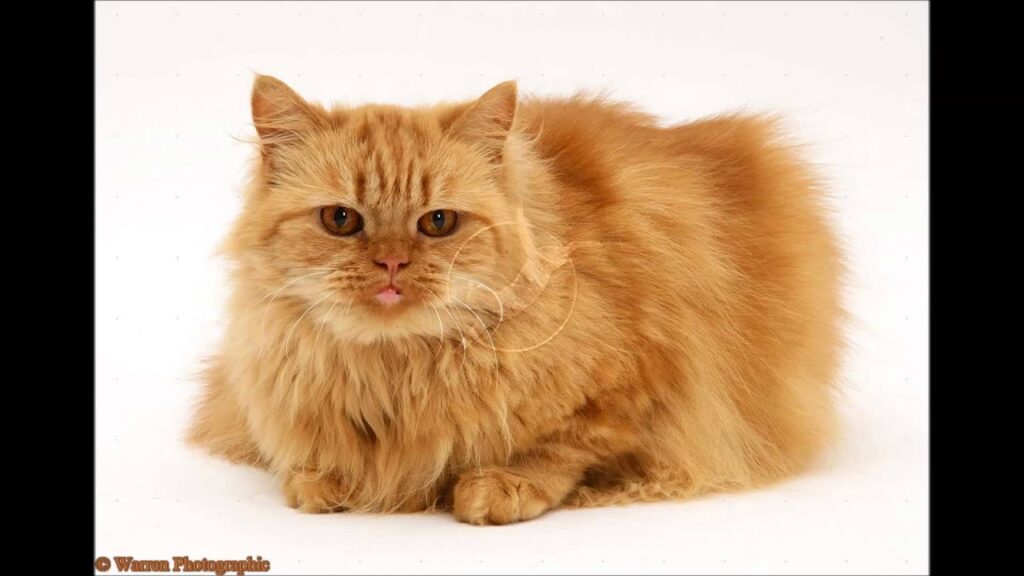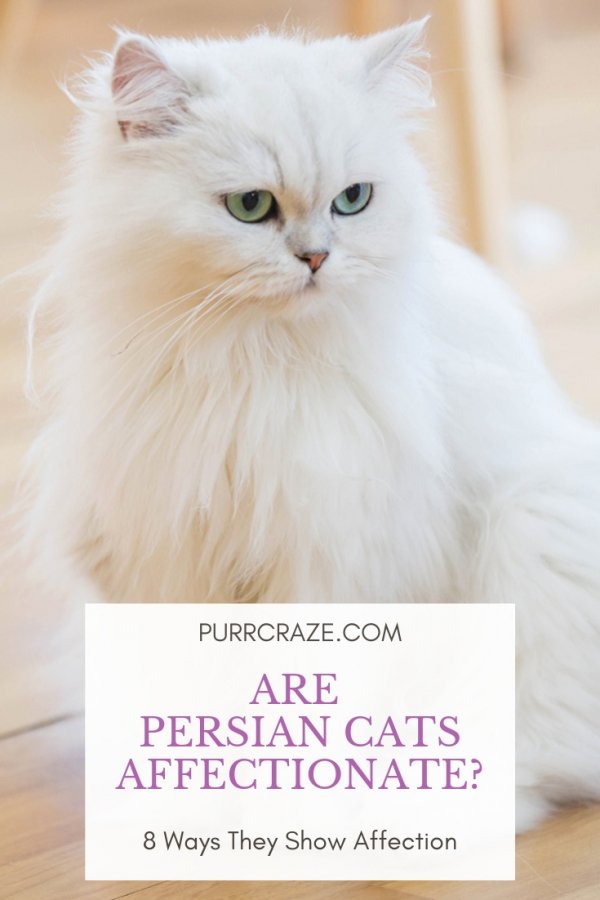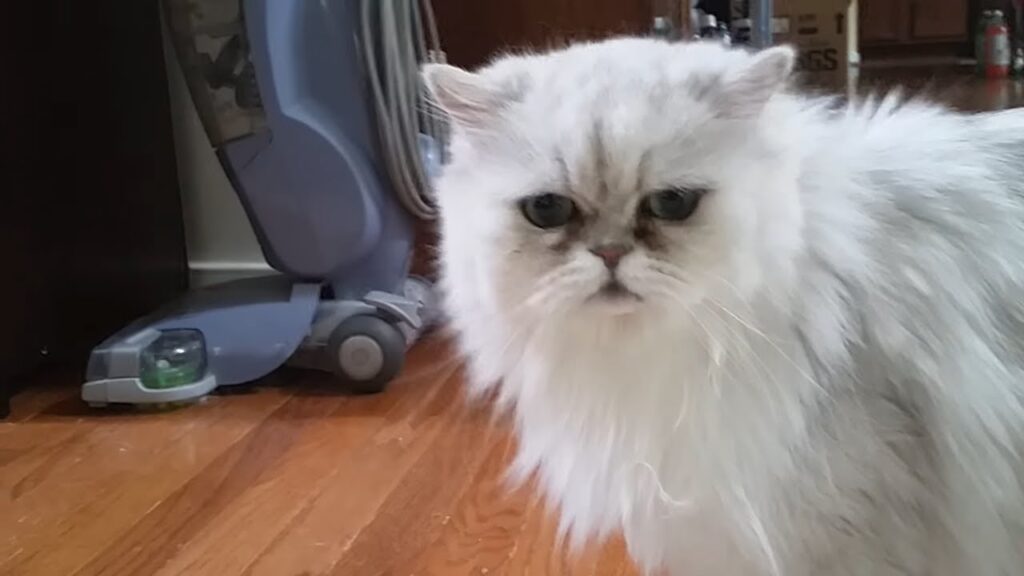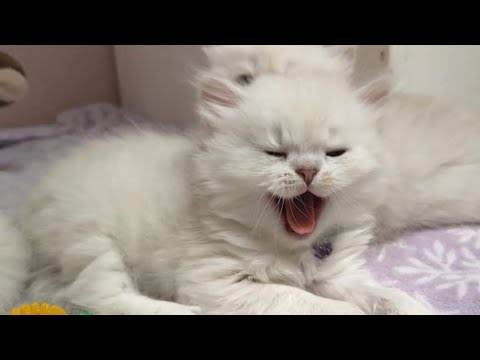Are you a fan of Persian cats? Well, you’re in luck because today we’re going to dive into the fascinating world of Persian cats and their vocalization. These beautiful, fluffy creatures are known for their calm and gentle demeanor, but they also have a unique way of expressing themselves through their vocalizations. In this article, we’ll explore the different sounds that Persian cats make, what they mean, and how to interpret and respond to them. So, if you’re curious about why your Persian cat meows, chirps, or purrs, stay tuned because we have all the information you need!
Persian cats are known for their soft and melodious voices, which add to their charm and elegance. They have a wide range of vocalizations, from the classic meow to the gentle purr and even the trilling sound that resembles the song of a bird. Each sound has a different meaning and serves as a way for your Persian cat to communicate with you and express their needs and desires. In this article, we’ll explore the various vocalizations of Persian cats and what they might signify. From the adorable little meows that mean “hello” to the loud and insistent cries that indicate hunger or discomfort, we’ll decode the language of Persian cats together. So, if you want to better understand and connect with your feline friend, keep reading because we have plenty of interesting insights and tips coming your way!
Persian Cats and Their Vocalization
Persian cats are known for their stunning beauty, with their luxurious coats and striking facial features. But there’s something else that makes these feline companions unique – their vocalization. From soft purring to melodious meows, Persian cats have a wide range of vocal expressions that they use to communicate with their human counterparts. In this article, we will delve deeper into the world of Persian cats and explore their vocalization habits.

Origins of Persian Cats
The history of Persian cats can be traced back to ancient Persia (modern-day Iran), where they were highly regarded as treasured companions of nobility and royalty. These cats were believed to have been brought to Europe by Italian traders in the 17th century, and their popularity quickly spread across the continent.
Breed Development
Over the centuries, Persian cats underwent selective breeding to achieve their distinctive physical characteristics such as their long, flowing coats and round, expressive eyes. Breeders focused on creating cats with a calm temperament and an affectionate nature, which are traits still evident in today’s Persian cats.

Popularity and Recognition
Persian cats gained immense popularity in the late 19th century and became one of the most beloved cat breeds worldwide. In 1871, they were officially recognized by the Cat Fanciers’ Association (CFA) in the United States, cementing their position as a highly esteemed breed. Today, Persian cats continue to captivate the hearts of cat lovers everywhere.
Physical Characteristics
Coat Types and Colors
One of the most distinguishing features of Persian cats is their beautiful coat. They come in a variety of coat types, including the traditional or doll-faced, the peke-faced, and the extreme or ultra-faced. The traditional Persian has a longer nose and a flatter face compared to the peke-faced and extreme-faced variations.
When it comes to coat colors, Persian cats offer a wide range of options. From solid colors such as white, black, and cream, to multi-colored patterns like tabby, tortoiseshell, and calico, there’s a Persian cat to suit every aesthetic preference.
Facial Features
Persian cats have a unique facial structure characterized by their expressive eyes, chubby cheeks, and small, turned-down noses. Their round, wide-set eyes come in various colors, including blue, green, copper, and hazel, adding to their undeniable charm.
Body Structure
Persian cats have a sturdy and muscular body with a short neck and a broad chest. They are known for their stocky build, somewhat low-slung stance, and thick, fluffy tail. Despite their robust appearance, Persian cats are graceful and elegant in their movements.

Personality Traits
Temperament
Persian cats are renowned for their gentle and laid-back temperament. They are generally calm, quiet, and undemanding, making them well-suited for apartment living or households with a relaxed atmosphere. These cats prefer a serene environment and enjoy spending their days lounging on comfortable surfaces.
Social Behavior
While Persian cats tend to be reserved around unfamiliar people, they form strong bonds with their human companions. They thrive on affection and appreciate a calm and loving home environment. Although they may not be as outgoing as some other cat breeds, Persian cats are loyal and devoted to their owners.
Intelligence and Trainability
Persian cats are known for their intelligence, but they have an independent streak that can make training a challenge. While they can learn basic commands and tricks, they are more likely to respond positively to gentle encouragement and positive reinforcement. Patience and consistency are key when trying to teach a Persian cat new behaviors.
Grooming Needs
Coat Care
One of the essential aspects of caring for a Persian cat is maintaining their luxurious coat. Their long, flowing hair requires regular grooming to prevent matting and tangles. Daily brushing is recommended to keep their coat in pristine condition, and occasional baths can help remove excess oils and debris.
Eye and Ear Care
Persian cats are prone to eye discharge due to their facial structure, so regular eye cleaning is crucial. Using a moist cotton ball or a specialized eye cleaner, gently wipe away any discharge to keep their eyes clean and prevent infections. Ear care involves checking for wax buildup and gently cleaning the outer ear with a soft cloth or cotton ball.
Nail Trimming
Like all cats, Persian cats need regular nail trimming to prevent their claws from becoming too long and causing discomfort. Use specially designed cat nail clippers and be cautious not to cut into the quick, a sensitive area that can cause bleeding. If you’re unsure how to trim your cat’s nails, consult a veterinarian or a professional groomer.

Feeding and Nutrition
Dietary Requirements
Persian cats require a balanced diet that meets their nutritional needs. High-quality cat food formulated specifically for Persian cats is recommended to ensure they receive the right combination of proteins, fats, and carbohydrates. Consult with your veterinarian to determine the most suitable diet for your Persian cat based on their age, weight, and overall health.
Types of Food
You can choose between dry kibble and wet canned food for your Persian cat’s meals. Dry food is convenient and helps maintain dental health, while wet food provides extra hydration and can be beneficial for cats with urinary tract issues. Some owners prefer a combination of both, offering dry kibble for grazing and wet food as a special treat.
Feeding Schedule
Establishing a regular feeding schedule is essential for maintaining your Persian cat’s health and preventing obesity. Divide their daily food portions into two or three meals throughout the day, depending on their age and activity level. Be sure to provide fresh water at all times and monitor their weight to adjust portions as needed.
Health Issues
Common Health Problems
Like many purebred cats, Persian cats are prone to certain health issues. Some of the common problems include polycystic kidney disease (PKD), which causes the formation of cysts in the kidneys, and brachycephalic airway syndrome, which can lead to respiratory difficulties due to their flat facial structure. Other health concerns include dental issues, heart disease, and eye problems such as cherry eye and entropion.
Preventive Care
To minimize the risk of health problems, regular preventive care is essential. This includes keeping up with vaccinations, flea and tick prevention, and annual health check-ups with a veterinarian. Regular dental care, including teeth brushing and professional cleanings, can help prevent gum disease and tooth decay.
Veterinary Checkups
To ensure your Persian cat’s well-being, it’s crucial to schedule regular veterinary checkups. Your veterinarian will conduct a thorough examination, check for any signs of health issues, and provide necessary vaccinations and preventive treatments. This proactive approach to healthcare can help catch potential problems early and improve your cat’s overall quality of life.

Breeding and Reproduction
Breeding Process
Breeding Persian cats requires careful planning and consideration. It is recommended to consult with experienced breeders and veterinarians to ensure the health and safety of both the male and female cats. Breeding should only be done with the intention of improving the breed and preserving desirable traits.
Pregnancy and Birth
The gestation period for Persian cats is typically around 63 to 65 days. During this time, the expectant mother will require extra care and nutrition to support the growth and development of the kittens. When it’s time for birth, Persian cats prefer privacy and quiet surroundings. The mother will usually handle the birthing process herself, but it’s advisable to be nearby in case of any complications.
Kitten Care
Raising Persian kittens requires dedication and attention. Providing a warm and safe environment, along with proper nutrition and socialization, is crucial for their healthy development. Regular veterinary checkups, vaccinations, and deworming are essential to ensure the kittens grow into happy and healthy cats.
Training and Behavior
Litter Training
Litter training Persian cats is usually a straightforward process. Start by placing a litter box in a quiet location and show them where it is. Encourage them to use the litter box by gently placing them in it after meals or naps. Be patient and consistent with the training, and soon your Persian cat will instinctively use the litter box.
Behavioral Issues
While Persian cats are generally well-behaved, they can occasionally exhibit behavioral issues. Common problems include excessive scratching, aggression, and marking territory. It’s essential to address these issues using positive reinforcement and redirection. Consulting with a professional animal behaviorist can be beneficial if the problems persist.
Positive Reinforcement
Persian cats respond well to positive reinforcement training methods. Rewarding good behavior with treats, praise, and gentle petting can help reinforce desired actions and discourage unwanted behaviors. Avoid punishment or physical force, as this can cause fear and anxiety, which may lead to further behavioral issues.
Exercise and Play
Physical Activity Needs
Persian cats are not known for their high energy levels, but regular exercise is still essential to keep them physically and mentally stimulated. Engage in interactive play sessions using toys that encourage movement and hunting instincts. A few daily play sessions, along with access to climbing structures and scratching posts, will keep your Persian cat happy and healthy.
Playtime Ideas
To provide variety in their playtime, try using interactive toys such as puzzle feeders that require mental stimulation. Feather toys, laser pointers, and wand toys are also popular choices that can keep your Persian cat entertained for hours. Experiment with different toys to discover what your cat enjoys the most.
Interactive Toys
Interactive toys are a great way to engage and entertain Persian cats. Puzzle feeders, treat-dispensing toys, and interactive electronic toys are designed to provide mental stimulation and keep your cat’s boredom at bay. These toys often mimic the movements of prey, sparking your cat’s natural hunting instincts and keeping them engaged for extended periods.
Living with Other Pets
Introducing Persian Cats to Other Pets
Introducing a Persian cat to other pets, such as dogs or other cats, requires a gradual and controlled approach. Start by allowing them to sniff each other through a closed door or a barrier. Gradually increase their exposure to each other while closely monitoring their reactions. Provide positive reinforcement and rewards for calm and positive interactions.
Maintaining Peaceful Coexistence
To maintain a peaceful coexistence between your Persian cat and other pets, it’s essential to provide each animal with their own space, resources, and attention. Set clear boundaries and make sure each pet has access to separate feeding areas, litter boxes, and sleeping spots. Time and patience are key to ensuring a harmonious living environment.
Preventing Conflicts
Conflicts between pets can sometimes arise, even with careful introductions. If conflicts occur, it’s vital to intervene and diffuse the situation immediately. Separate the animals and provide them with individual space until they have calmed down. If the conflicts persist, consult with a professional animal behaviorist for further guidance.
Traveling with Persian Cats
Tips for Safe Travel
Traveling with Persian cats requires careful preparation to ensure their safety and comfort. Invest in a secure and well-ventilated carrier that allows your cat to sit, stand, and lie down comfortably. Line the carrier with a soft blanket or bedding to provide extra comfort during the journey.
Preparing for a Trip
Before traveling, it’s important to accustom your Persian cat to their carrier gradually. Leave the carrier open at home with familiar bedding and treats to create positive associations. Additionally, pack essential items such as food, water, litter, and any necessary medications. Familiarize yourself with local pet-friendly accommodations or research pet-sitting services at your destination.
Travel Accessories
To make the travel experience more comfortable for your Persian cat, consider investing in accessories such as harnesses or leashes for supervised outdoor exploration, safety seat belts for car travel, and calming aids like pheromone sprays or plug-in diffusers. These accessories can help reduce stress and anxiety during the journey.
Famous Persian Cats
Historical Figures with Persian Cats
Throughout history, Persian cats have had their fair share of fame. They were adored by notable historical figures such as Queen Victoria, who had a particular fondness for these regal felines. Persians were also beloved by famous writers, politicians, and artists who found inspiration and companionship in these elegant creatures.
Celebrity Cat Owners
Persian cats have captured the hearts of many celebrities as well. Famous personalities like Taylor Swift, Karl Lagerfeld, and Mariah Carey have all welcomed Persian cats into their homes. Their social media accounts often feature adorable photos and videos of their feline companions, showcasing the love and admiration for this beloved breed.
Internet Phenomena
Persian cats have taken the internet by storm, becoming internet sensations in their own right. From Grumpy Cat, with her permanently stern expression, to Nala Cat, who boasts millions of followers on social media, Persian cats have become synonymous with cuteness and have amassed a dedicated following online.
Persian Cats in Popular Culture
Persian Cats in Movies and TV Shows
Persian cats have made appearances in various movies and TV shows, often portrayed as elegant and sophisticated characters. They are often cast as the epitome of sophistication and glamour, enhancing the visual appeal of films and adding a touch of grace to the silver screen.
Persian Cats in Literature
Literature has also celebrated the beauty and charm of Persian cats. They have been featured in numerous novels, children’s books, and poems, capturing the imagination of readers with their majestic presence. These literary representations have helped solidify the Persian cat’s status as a beloved and iconic breed.
Persian Cat Art
The allure of Persian cats has inspired artists throughout history. Their elegant features and expressive eyes have been immortalized in various art forms, including paintings, sculptures, and photographs. Persian cat art continues to captivate art enthusiasts and allows them to celebrate the beauty of these enchanting creatures.
Conclusion
Persian cats are more than just a pretty face – their vocalization and unique characteristics make them truly fascinating pets. From their melodious meows to their gentle purring, Persian cats have a way of communicating and captivating their human companions. Whether you’re a fan of their regal beauty or fascinated by their vocal habits, Persian cats continue to be cherished companions loved by many.
Common Questions:
-
Are Persian cats a vocal breed?
- Yes, Persian cats are known for their vocalization and various vocal expressions.
-
How do Persian cats communicate with their owners?
- Persian cats communicate through a range of vocalizations, including meowing, purring, and chirping.
-
Why do Persian cats meow a lot?
- Persian cats may meow frequently to communicate their needs, seek attention, or express discomfort.
-
Do Persian cats have a specific meow tone?
- Persian cats’ meow tones can vary from soft and gentle to loud and demanding, depending on their personality and needs.
-
Are Persian cats more vocal than other cat breeds?
- While each cat has its unique vocalization habits, Persian cats are known for being more vocal compared to some other breeds.
-
Do Persian cats purr a lot?
- Persian cats are known for their gentle and soothing purrs, which they use to express contentment and relaxation.
-
How can I understand what my Persian cat is trying to communicate?
- By observing their body language, vocalizations, and spending quality time with your Persian cat, you can develop a better understanding of their needs and emotions.
-
Can Persian cats communicate using body language?
- Yes, Persian cats, like all cats, rely on body language cues such as tail position, ear position, and facial expressions to communicate their feelings.
-
Do Persian cats chirp like birds?
- Yes, Persian cats occasionally emit a chirping sound, often referred to as “chirruping,” which is a combination of a meow and a chirp.
-
Can Persian cats be trained to respond to specific vocal cues?
- While Persian cats can learn basic commands and understand certain vocal cues, they may not be as responsive to training as some other breeds. However, positive reinforcement can be effective in encouraging desired behaviors.